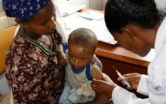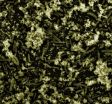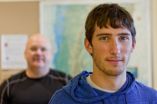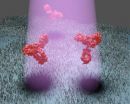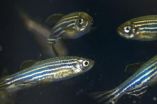(Press-News.org) (SACRAMENTO, Calif.) —In what may be the largest study of sleep problems among individuals with multiple sclerosis (MS), researchers at UC Davis have found that widely undiagnosed sleep disorders may be at the root of the most common and disabling symptom of the disease: fatigue.
Conducted in over 2,300 individuals in Northern California with multiple sclerosis, the large, population-based study found that, overall, more than 70 percent of participants screened positive for one or more sleep disorders.
The research highlights the importance of diagnosing the root causes of fatigue among individuals with MS, as sleep disorders may affect the course of the disease as well as the overall health and well-being of sufferers, the authors said.
The study "The Underdiagnosis of Sleep Disorders in Patients with Multiple Sclerosis," is published online today in the Journal of Clinical Sleep Medicine.
"A large percentage of MS subjects in our study are sleep deprived and screened positive for one or more sleep disorders," said Steven Brass, associate clinical professor and director of the Neurology Sleep Clinical Program and co-medical director of the UC Davis Sleep Medicine Laboratory.
"The vast majority of these sleep disorders are potentially undiagnosed and untreated," he said. "This work suggests that patients with MS may have sleep disorders requiring independent diagnosis and management."
Fatigue is the hallmark of multiple sclerosis, an inflammatory disease affecting the white matter and spinal cord of sufferers. MS symptoms include loss of vision, vertigo, weakness and numbness. Patients also may experience psychiatric symptoms. Disease onset generally is between the ages of 20 and 50 years. The cause of the MS is not known, although it is believed to be an autoimmune condition.
Sleep disorders are known to occur more frequently among patients with MS. To gauge the extent of sleep disorders among people with MS, Brass and his colleagues surveyed members of the Northern California Chapter of the National MS Society. Subjects were recruited in 2011.
More than 11,000 surveys were mailed to prospective participants. Of those, 2,375 met inclusion criteria and were included in the study. Consistent with the reported epidemiology of multiple sclerosis, the majority (81 percent) were female and Caucasian (88 percent). The mean age of the participants was 54.
Study participants were asked to complete a 10-page survey, which included a detailed sleep history and questions assessing obstructive sleep apnea, daytime sleepiness, insomnia and restless legs syndrome.
Most of the participants - nearly 52 percent - said it took them more than one half hour to fall asleep at night, and nearly 11 percent reported taking a medication to fall asleep. Close to 38 percent of participants screened positive for obstructive sleep apnea. Nearly 32 percent had moderate to severe insomnia and nearly 37 percent had restless legs syndrome. Moderate insomnia was experienced by nearly 25 percent of respondents.
However, most of the participants had not been diagnosed with a sleep disorder by a physician. While nearly 38 percent reported having obstructive sleep apnea, only a little more than 4 percent reported being diagnosed by a physician with the condition. Similar statistics were seen for other sleep disorders.
"Sleep disorder frequency, sleep patterns and complaints of excessive daytime sleepiness suggest that sleep problems may be a hidden epidemic in the MS population, separate from MS fatigue," Brass said.
INFORMATION:
Other study authors include Chin-Shang Li of UC Davis and Sanford Auerbach of Boston University.
The study was funded by a grant from the National Center for Advancing Translational Sciences and the National Institutes of Health through grant UL1 TR000002.
UC Davis Health System is improving lives and transforming health care by providing excellent patient care, conducting groundbreaking research, fostering innovative, interprofessional education, and creating dynamic, productive partnerships with the community. The academic health system includes one of the country's best medical schools, a 619-bed acute-care teaching hospital, a 1000-member physician's practice group and the new Betty Irene Moore School of Nursing. It is home to a National Cancer Institute-designated comprehensive cancer center, an international neurodevelopmental institute, a stem cell institute and a comprehensive children's hospital. Other nationally prominent centers focus on advancing telemedicine, improving vascular care, eliminating health disparities and translating research findings into new treatments for patients. Together, they make UC Davis a hub of innovation that is transforming health for all. For more information, visit healthsystem.ucdavis.edu.
Sleep disorders widely undiagnosed in individuals with multiple sclerosis
2014-09-15
ELSE PRESS RELEASES FROM THIS DATE:
How evolutionary principles could help save our world
2014-09-15
The age of the Anthropocene--the scientific name given to our current geologic age--is dominated by human impacts on our environment. A warming climate. Increased resistance of pathogens and pests. A swelling population. Coping with these modern global challenges requires application of what one might call a more-ancient principle: evolution.
That's the recommendation of a diverse group of researchers, in a paper published today in the online version of the journal Science. A majority of the nine authors on the paper have received funding from the National Science Foundation ...
Boosting armor for nuclear-waste eating microbes
2014-09-15
EAST LANSING, Mich. – A microbe developed to clean up nuclear waste and patented by a Michigan State University researcher has just been improved.
In earlier research, Gemma Reguera, MSU microbiologist, identified that Geobacter bacteria's tiny conductive hair-like appendages, or pili, did the yeoman's share of remediation. By increasing the strength of the pili nanowires, she improved their ability to clean up uranium and other toxic wastes.
In new research, published in the current issue of Applied and Environmental Microbiology, Reguera has added an additional layer ...
Selway complex and Johnson Bar fires in Idaho
2014-09-15
Two fires are seen burning in this satellite image taken by the Aqua satellite on September 11, 2014. The Selway complex of fires had been previously reported located 30 miles west of Darby, MT. It appears a new fire may have started again in this complex. Currently the size of the complex is 1,659 fires. The fire is mostly contained and there will be no additional reporting on this fire unless activity increases. It is, for the most part, contained.
The Johnson Bar fire started with a lightning strike on August 03, 2014. To date, 8,867 acres have been affected. ...
New glaucoma culprit is found
2014-09-15
Glaucoma, a leading cause of irreversible blindness, is associated with elevated pressure in the eye. This elevated pressure essentially is due to a plumbing problem. Fluid builds up in the eye, increasing pressure and eventually damaging the optic nerve. For nearly 150 years, researchers have been trying to understand what causes the blockage that prevents the eye from draining properly.
In a unique study of human ocular cells, a multi-institution research team led by a biomedical engineer at Northwestern University has found a new culprit. Glaucoma appears to be a consequence ...
Getting hot and wet in Vermont
2014-09-15
Here's your northern Vermont forecast for the rest of this century: annual precipitation will increase by between a third and half an inch per decade, while average temperatures will rise some five degrees Fahrenheit by midcentury. By late in the century, average temperatures will have spiked more than eight degrees. In July, by 2100, the City of Burlington will have at least ten additional days above ninety degrees. The growing season picks up 43 more days. Looking at ski conditions, expect annual snowfall at six major ski resorts to decline about fifty percent by century's ...
Mayo finds many liver transplant patients can avoid costly stay in ICU after surgery
2014-09-15
JACKSONVILLE, Fla., Sept. 12, 2014 — The liver transplant team at Mayo Clinic in Florida has found, based on 12 years of experience, that more than half of patients receiving a new liver can be "fast-tracked" to return to a surgical ward room following their transplant, bypassing a one- or two-day stay in the Intensive Care Unit (ICU).
In the September issue of the American Journal of Transplantation, the physicians and researchers have turned their knowledge of who can be safely fast-tracked into a scoring system that other transplant centers can also use — thus sparing ...
The shadow of a disease
2014-09-15
This news release is available in German.
In future, some diseases might be diagnosed earlier and treated more effectively. Researchers at the Max Planck Institute for the Science of Light in Erlangen have developed an optical method that makes individual proteins, such as the proteins characteristic of some cancers, visible. Other methods that achieve this only work if the target biomolecules have first been labelled with fluorescent tags; In general, however, that approach is difficult or even impossible. By contrast, with their method, coined iSCAT, the researchers ...
Unemployment for doctoral scientists and engineers below national average in 2013
2014-09-15
A new National Science Foundation (NSF) report says the 2013 unemployment rate for individuals with research doctoral degrees in science, engineering and health (SEH) fields was one-third the rate for the general population aged 25 and older--2.1 percent versus 6.3 percent.
According to the report, an estimated 837,900 individuals in the United States held SEH research doctoral degrees in 2013, and nearly 735,900 of them were in the labor force; this includes those employed full time or part time and unemployed individuals actively seeking work.
Statistics show that ...
USC researchers discover the healing power of 'rib-tickling'
2014-09-15
Unlike salamanders, mammals can't regenerate lost limbs, but they can repair large sections of their ribs.
In a new study in the Journal of Bone and Mineral Research, a team directed by USC Stem Cell researcher Francesca Mariani takes a closer look at rib regeneration in both humans and mice.
The first author of the paper, USC medical student Marissa K. Srour, was a USC undergraduate when she started the project, which earned a 2011 USC Discovery Scholar Prize. Each year, 10 graduating seniors win these coveted prizes, which recognize exceptional new scholarship.
Using ...
Zebrafish model of a learning and memory disorder shows better treatment
2014-09-15
PHILADELPHIA — Using a zebrafish model of a human genetic disease called neurofibromatosis (NF1), a team from the Perelman School of Medicine at the University of Pennsylvania has found that the learning and memory components of the disorder are distinct features that will likely need different treatment approaches. They published their results this month in Cell Reports.
NF1 is one of the most common inherited neurological disorders, affecting about one in 3,000 people. It is characterized by tumors, attention deficits, and learning problems. Most people with NF1 have ...
